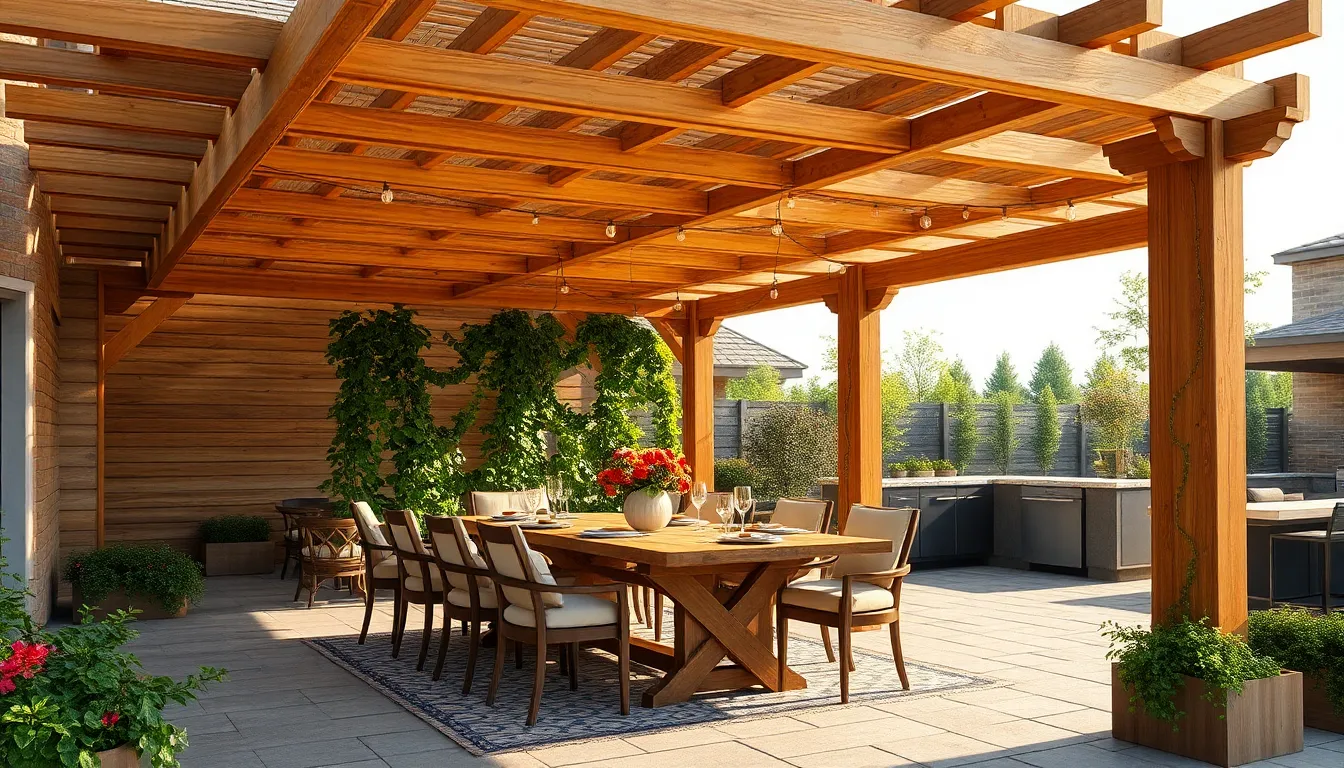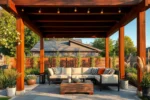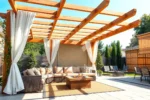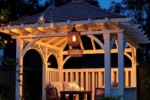Transforming your outdoor dining area with a pergola is a smart way to blend style, comfort, and functionality—whether you’re just starting your backyard makeover or refining an established space. These structures create inviting shade and a defined gathering spot, making every meal outside feel special and protected from the elements.
In this article, you’ll explore 12 diverse pergola designs that suit a variety of tastes and budgets, from simple frameworks to intricate, custom builds. Each option includes practical tips to help you choose the right style and materials, so you can confidently enhance your outdoor dining experience with a pergola that fits your lifestyle.
Classic Wooden Pergola Designs
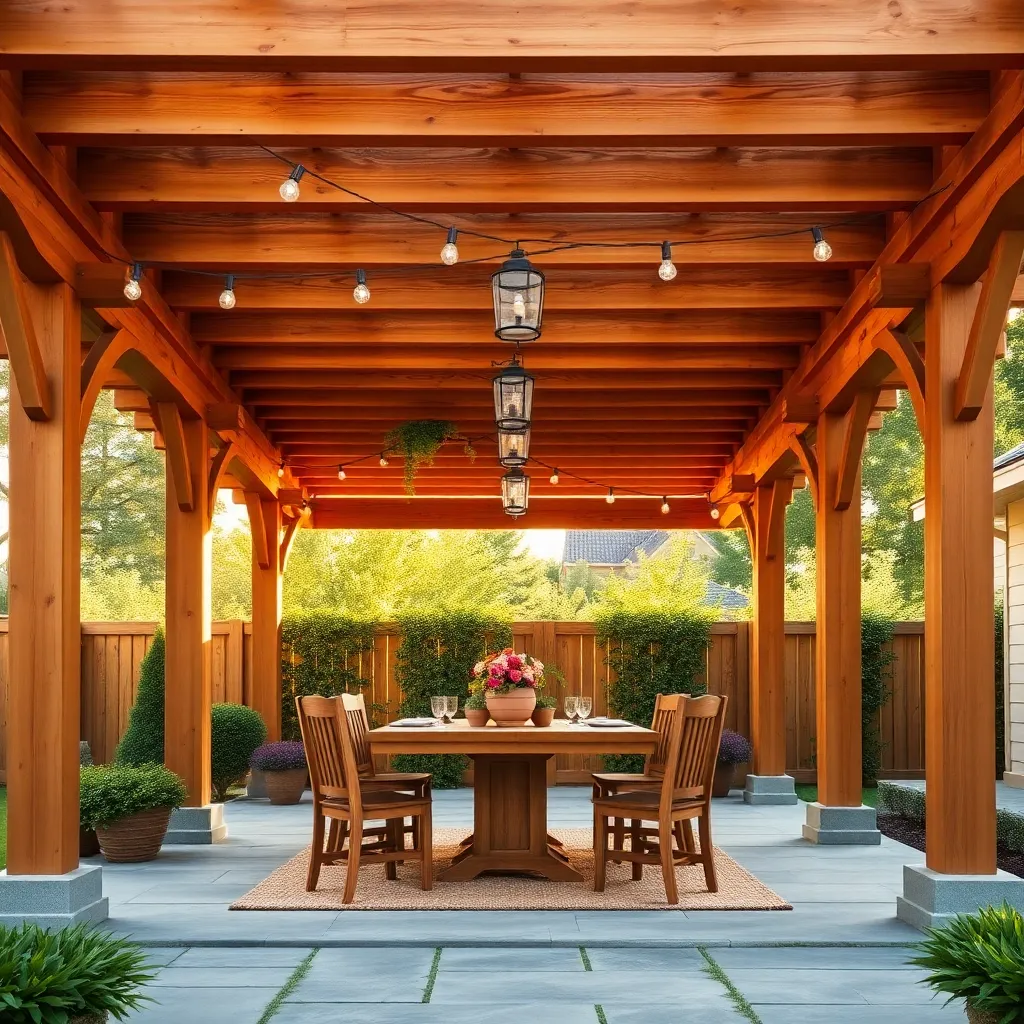
Classic wooden pergolas bring timeless charm and structure to any outdoor dining area. When selecting materials, opt for durable hardwoods like cedar or redwood, which resist rot and insects naturally. For beginners, keep the design simple with a rectangular frame around 10×12 feet, and use spaced slats on top to provide dappled shade while allowing airflow.
To elevate your pergola, consider these practical tips: apply a weather-resistant sealant annually to maintain wood integrity, and incorporate crossbeams or decorative corbels for added visual interest. For advanced builders, adding climbing plants such as wisteria or grapevines can create natural shade and an inviting atmosphere, but ensure the structure is sturdy enough to support the extra weight over time.
Modern Metal Pergola Styles
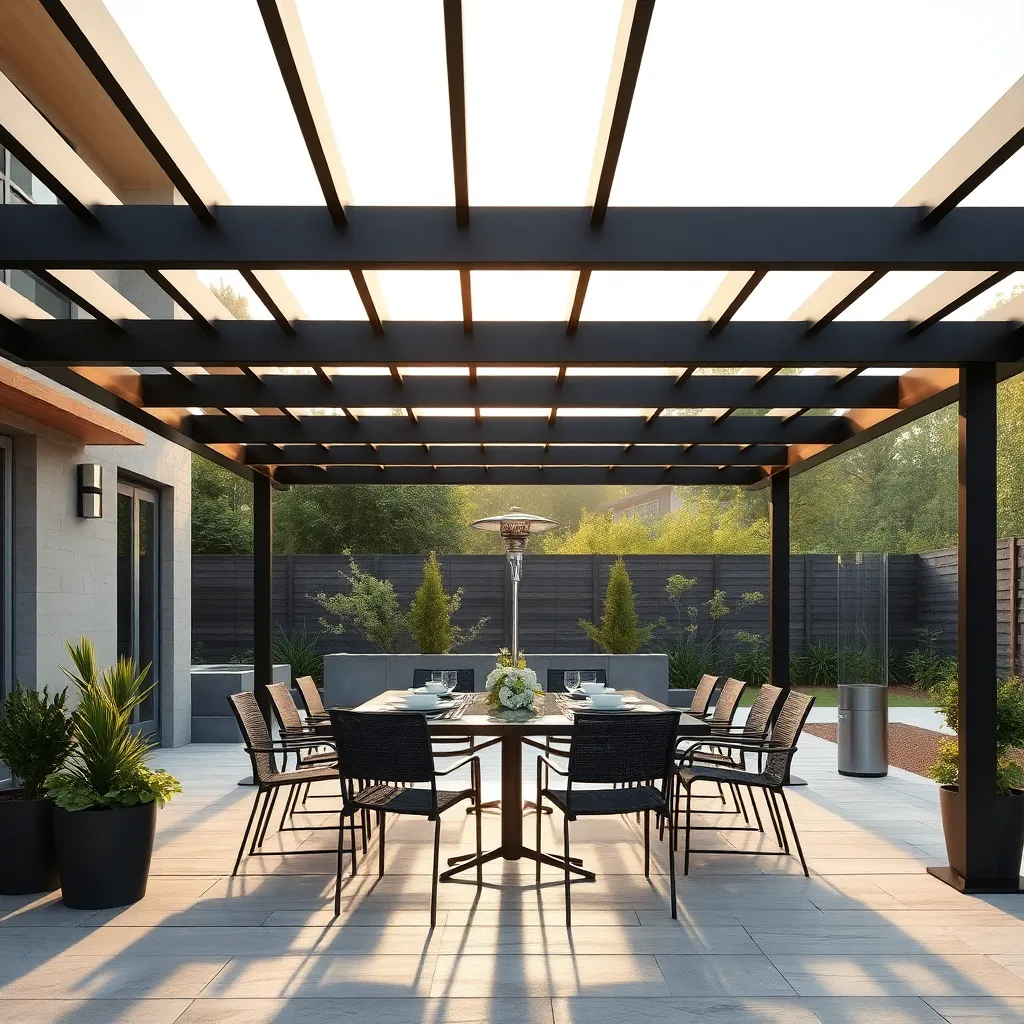
Modern metal pergolas offer a sleek, durable alternative to traditional wood, perfect for homeowners seeking a low-maintenance yet stylish outdoor dining area. When selecting materials, consider powder-coated aluminum or galvanized steel for superior rust resistance and longevity, especially in varying climates. Aim for clean lines and minimalist designs, and incorporate adjustable louvered roofs or retractable canopies to control sunlight and enhance comfort throughout the day.
To maximize both style and function, focus on integrating built-in LED lighting and weatherproof outdoor speakers into your metal pergola design. For beginners, a standard size around 10 by 12 feet offers ample space for dining furniture while keeping installation manageable. Advanced tips include anchoring posts with concrete footings for stability and considering custom powder-coat colors to match your home’s exterior palette, ensuring your modern metal pergola becomes a striking yet practical centerpiece in your outdoor dining space.
Incorporating Climbing Plants
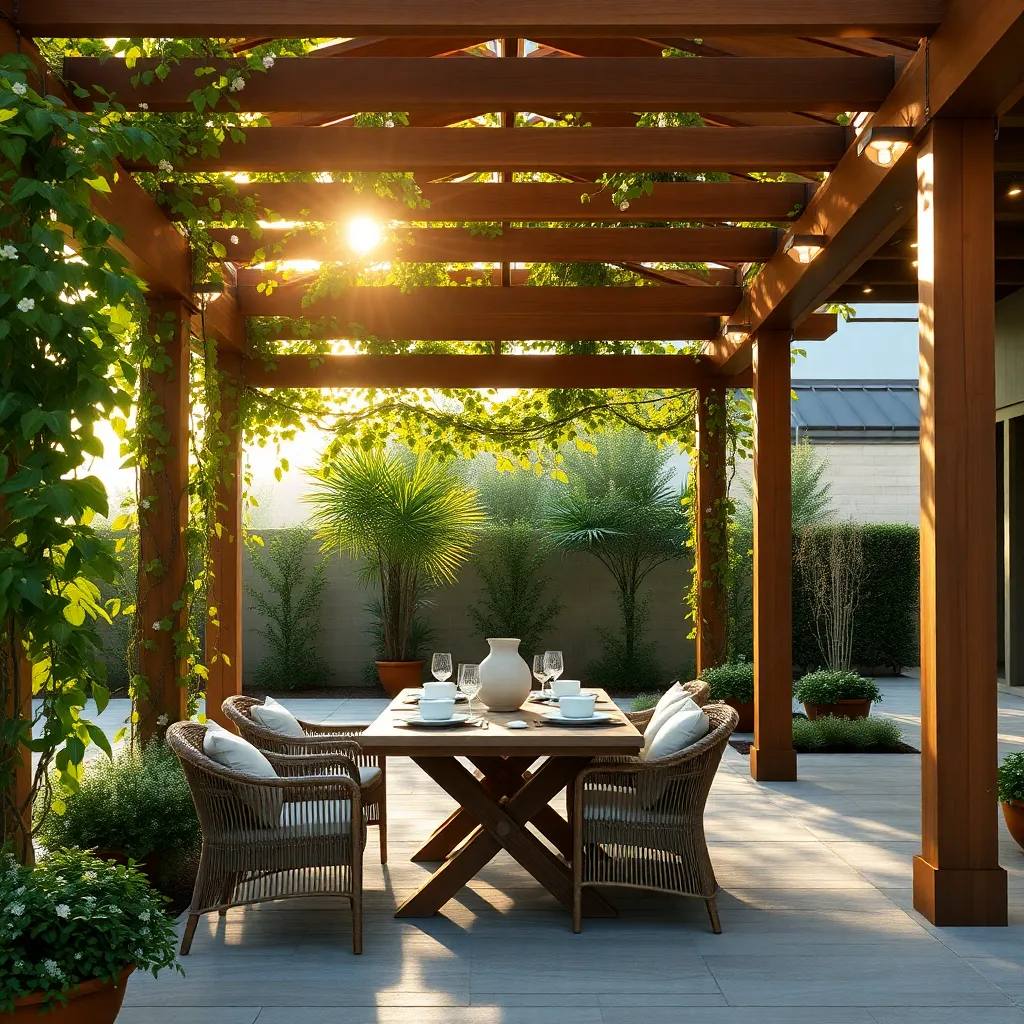
Incorporating climbing plants into your pergola design not only adds natural beauty but also provides valuable shade and privacy. For best results, choose sturdy materials like cedar or treated wood that can support the weight of mature vines such as wisteria, clematis, or climbing roses. Install strong crossbeams spaced about 12 to 18 inches apart to guide plant growth and ensure even coverage, making maintenance easier for both beginners and experienced gardeners.
To enhance your outdoor dining area, consider training vines along vertical posts and overhead beams using garden ties or trellis netting for controlled growth. Advanced gardeners can integrate drip irrigation systems to keep climbing plants healthy without excess effort. Remember to prune regularly in late winter or early spring to encourage flowering and prevent overgrowth, ensuring your pergola remains a stunning, functional shelter year-round.
Pergolas With Retractable Roofs
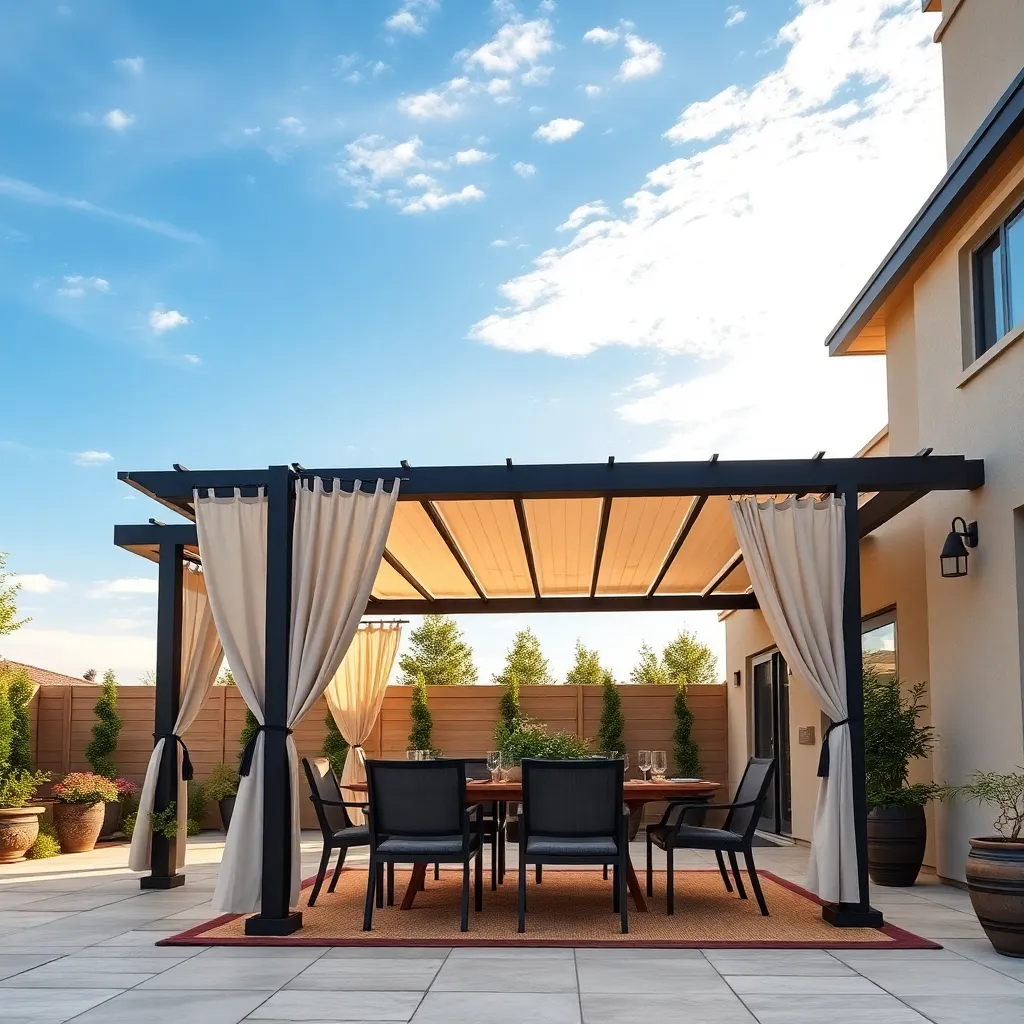
Retractable roofs add versatility to pergolas, allowing you to enjoy your outdoor dining area rain or shine. When choosing materials, consider durable, weather-resistant fabrics like Sunbrella or PVC-coated polyester, which offer UV protection and easy cleaning. For a sleek look, opt for aluminum framing paired with motorized retractable systems, which provide smooth operation and can be controlled remotely for convenience.
To maximize functionality, plan the pergola size with a clear span of at least 10 by 12 feet to cover your dining furniture comfortably. Incorporate drainage channels or gutters into the design to prevent water pooling when the roof is closed. Advanced tips include integrating LED lighting and ceiling fans into the retractable roof structure, enhancing comfort and ambiance for evening gatherings.
Freestanding Versus Attached Pergolas
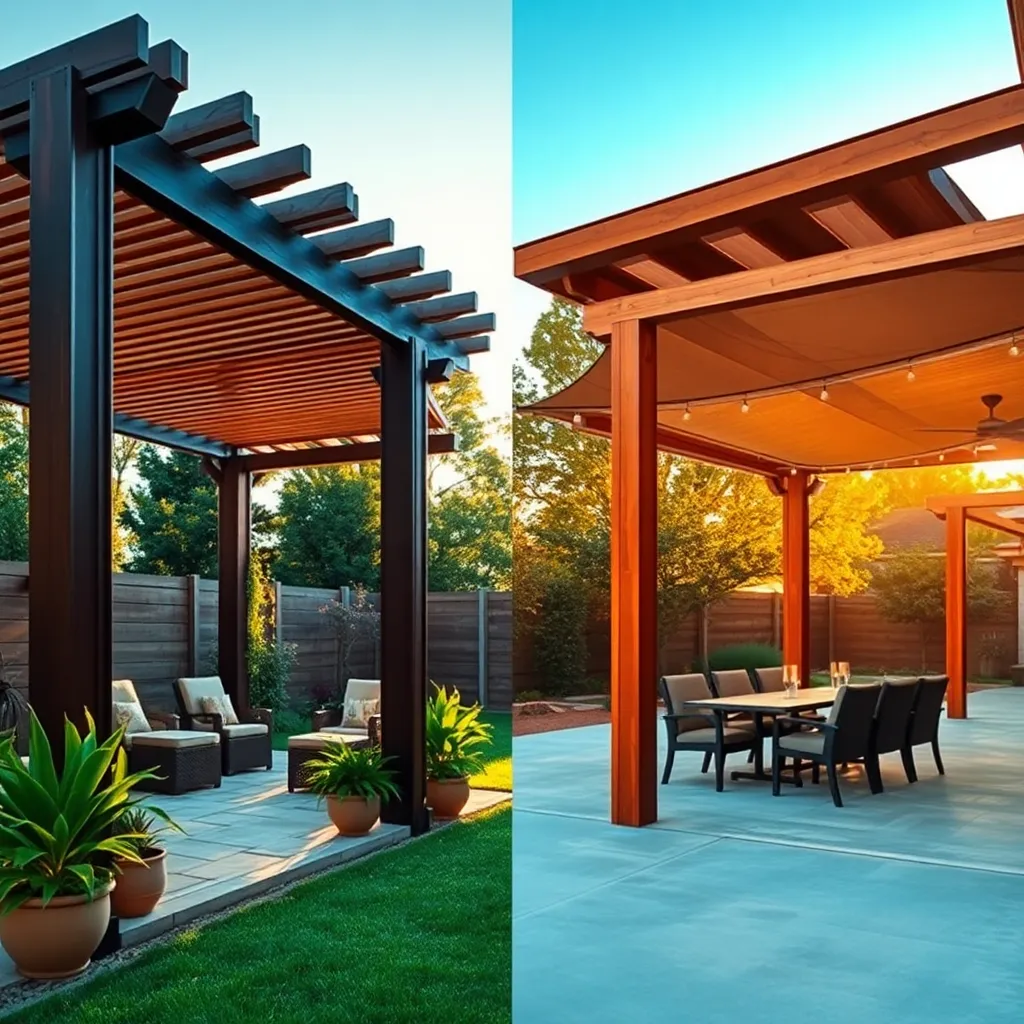
Freestanding pergolas offer flexibility in placement and design, allowing you to create a distinct outdoor dining space anywhere in your yard. When building, opt for durable materials like cedar or pressure-treated pine, and ensure posts are set in concrete footings at least 24 inches deep for stability. For added style and shade, consider incorporating crossbeams spaced 12 to 18 inches apart and climbing plants or fabric canopies.
In contrast, attached pergolas are anchored to your home, providing seamless access and a cohesive look that extends your indoor living area outdoors. When constructing attached pergolas, use ledger boards securely fastened to the house’s rim joist and ensure proper flashing to prevent water damage. To maximize usability, design the pergola with a depth of 10 to 12 feet and include adjustable slats or retractable shades for customizable sun protection.
Integrating Lighting Fixtures
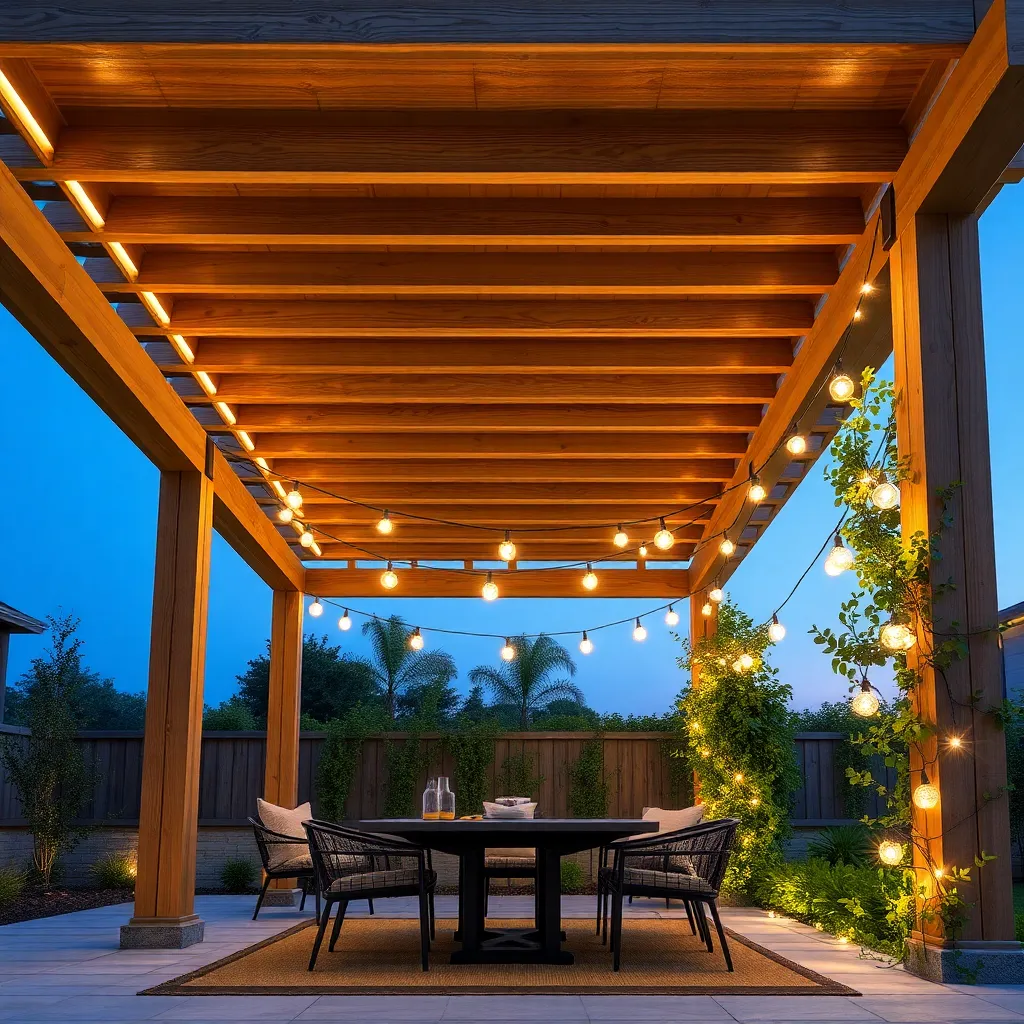
Lighting is a crucial element to enhance both the functionality and ambiance of your pergola dining area. For a seamless integration, consider installing weather-resistant LED string lights or recessed lighting within the pergola beams to provide soft, evenly distributed illumination. Using dimmable fixtures allows you to adjust brightness depending on the occasion, while waterproof wiring and outdoor-rated fixtures ensure safety and durability in all weather conditions.
To elevate your setup, combine ambient lighting with task lighting such as pendant lights or lantern-style fixtures positioned over the dining table for focused light during meals. When wiring is a concern, solar-powered or low-voltage LED options offer easy installation without extensive electrical work. Remember to use rust-resistant materials like aluminum or stainless steel for fixtures, and always plan your lighting layout ahead to avoid shadows and glare, ensuring a comfortable dining experience day or night.
Adding Comfortable Seating Areas
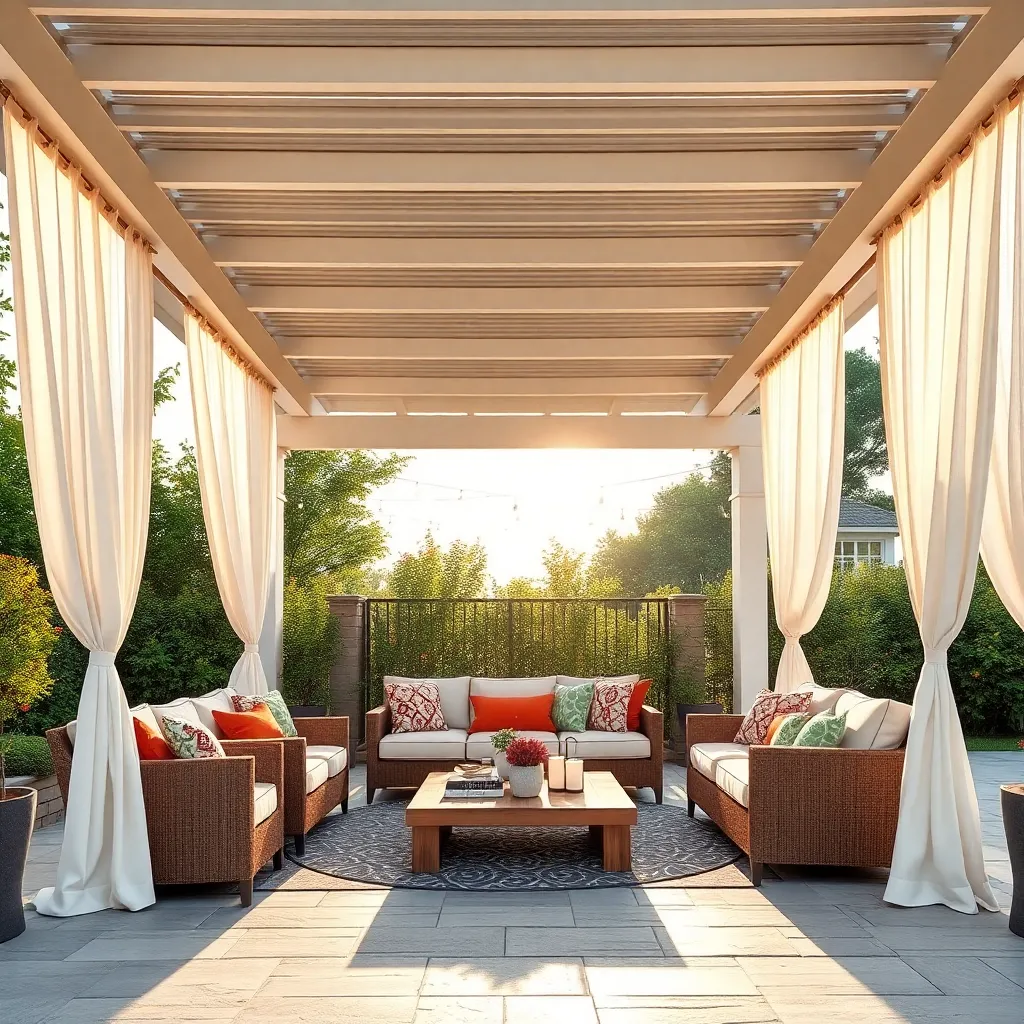
Creating comfortable seating areas under your pergola is essential for maximizing its use as an inviting outdoor dining space. Start with durable, weather-resistant materials like teak, cedar, or powder-coated aluminum for your furniture frames, paired with cushions made from quick-drying, UV-resistant fabrics such as Sunbrella. Ensure seating arrangements have enough space—ideally allowing at least 24 inches of width per person and 36 inches of clearance around tables for easy movement. Incorporating built-in benches with storage beneath can also save space while offering functionality.
To elevate the comfort level, consider adding adjustable features like reclining backs or extendable footrests, which work well in pergolas with adjustable louvered roofs for flexible shade control. Enhance the ambiance with outdoor rugs made from polypropylene or other weatherproof materials, which define the seating zone and add warmth underfoot. For a more advanced touch, install modular seating with integrated heating elements or USB charging ports, making your pergola a cozy, tech-friendly spot year-round.
Designing for Shade and Ventilation
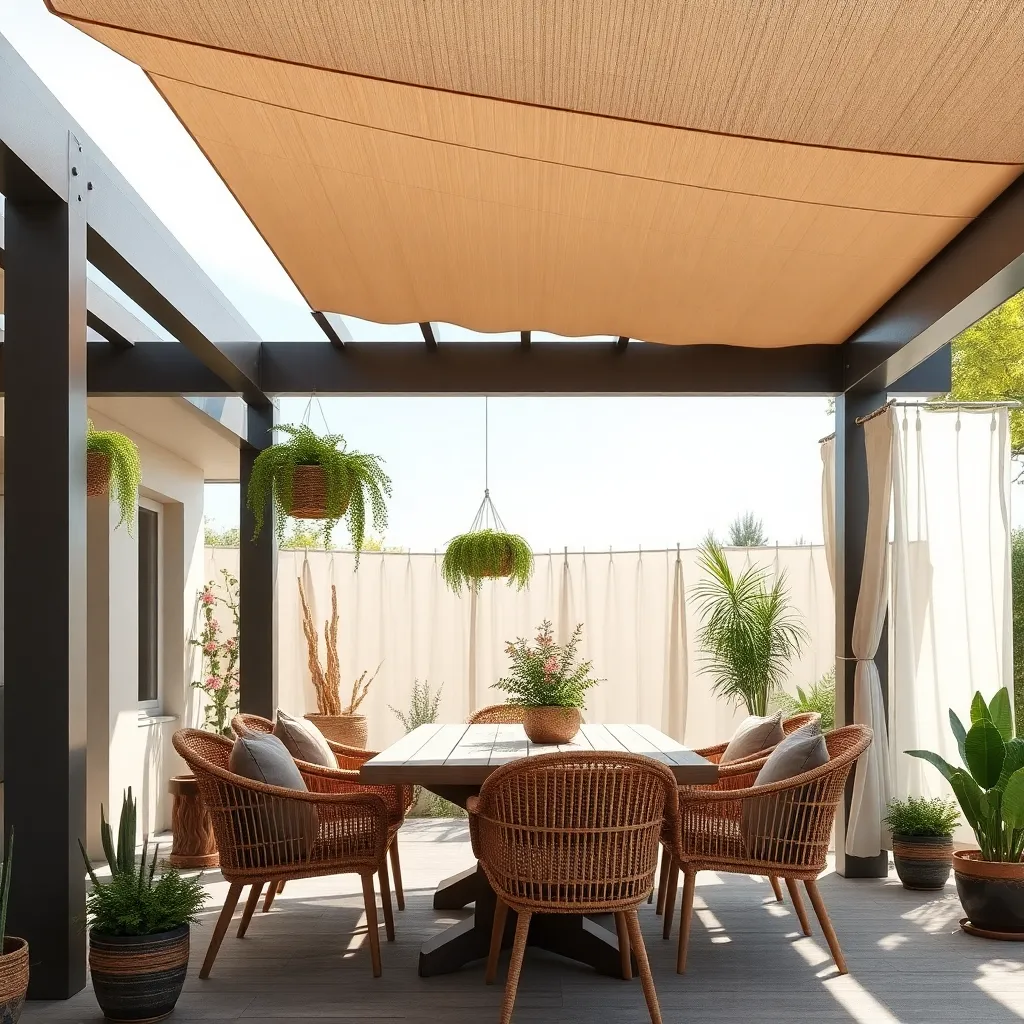
Creating effective shade in your pergola starts with selecting the right materials and layout. Consider installing adjustable louvers or retractable fabric canopies made from UV-resistant materials like solution-dyed acrylic to provide flexible sun protection that can be tailored throughout the day. For a more natural look, incorporating climbing plants such as wisteria or grapevines not only adds charm but also offers organic shade and cooling as their leaves grow dense.
Ventilation is equally important to maintain comfort during warm weather. Designing your pergola with an open lattice roof or spaced slats encourages airflow, preventing heat buildup underneath. For advanced ventilation, integrate ceiling fans or strategically placed vents at the top corners to enhance air circulation, ensuring your outdoor dining area remains cool and breezy even on hot days.
Customizing Pergolas With Curtains
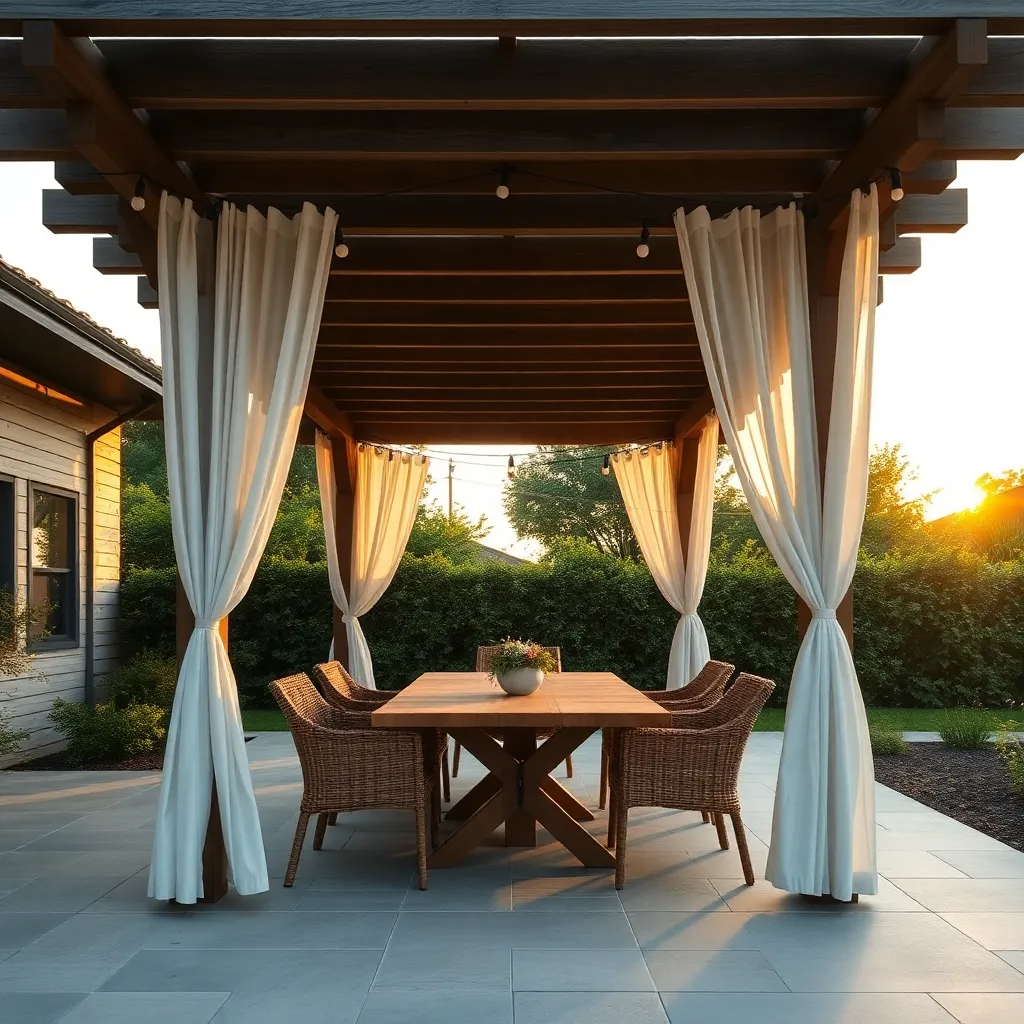
Adding curtains to your pergola is a simple yet effective way to enhance privacy and control sunlight in your outdoor dining area. Choose durable, weather-resistant fabrics like solution-dyed acrylic or polyester that resist fading and mildew; ensure the fabric is wide enough to cover the pergola’s openings, typically 8 to 12 feet wide per panel. Install sturdy curtain rods or stainless steel cables along the inside edges of the pergola frame, allowing the curtains to be easily drawn or tied back depending on the desired shade and airflow.
For a polished look and functional benefit, consider using grommets or track systems for smooth curtain movement and quick removal for cleaning or seasonal changes. Advanced tips include adding weighted hems to prevent curtains from blowing in the wind and incorporating tie-back hooks on the pergola posts to keep curtains neatly gathered. This approach not only elevates the aesthetic but also provides versatile protection against sun, wind, and light rain, making your pergola a more comfortable dining retreat year-round.
Using Pergolas to Define Space
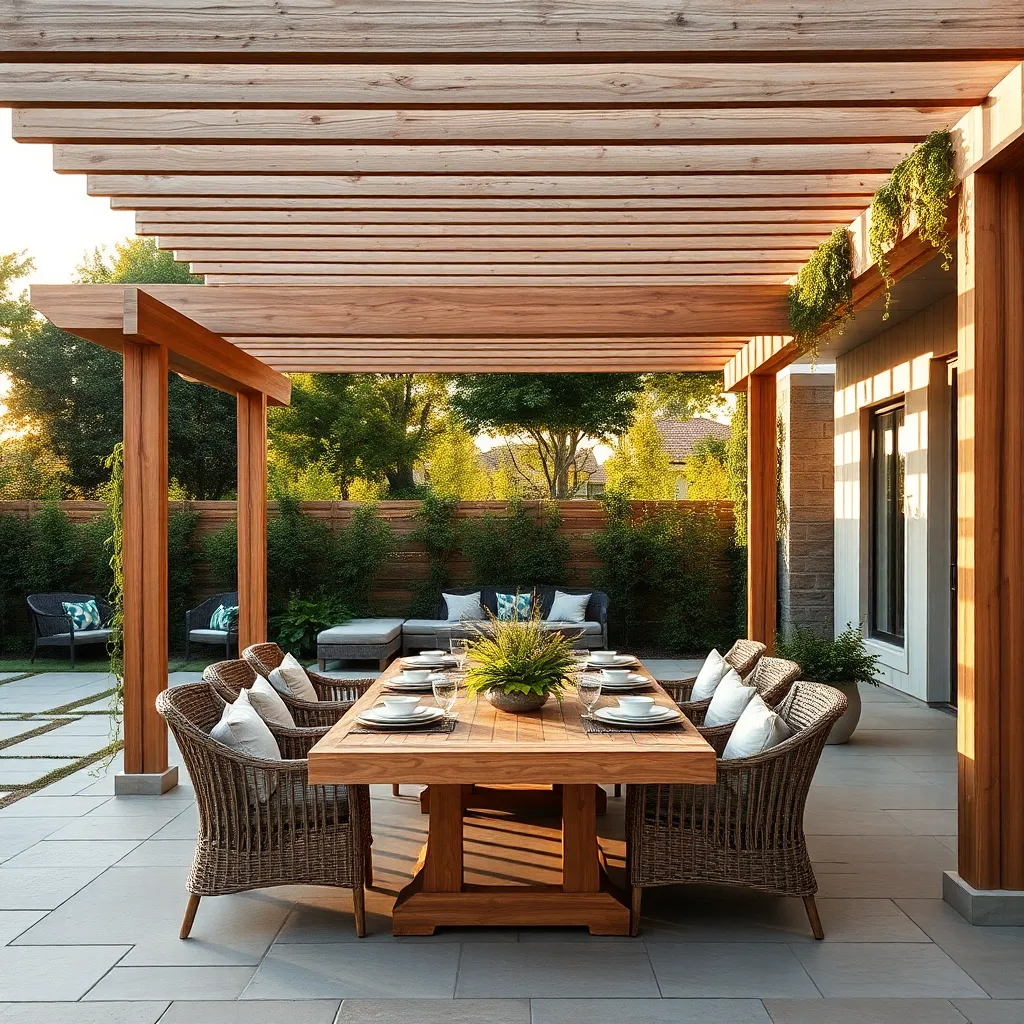
Using a pergola to define your outdoor dining area creates a clear, inviting space that blends functionality with style. Choose durable materials like cedar or aluminum for the pergola frame to ensure longevity and low maintenance, and consider a size that comfortably fits your dining set—typically at least 12 by 12 feet for a standard table and chairs. Adding design elements such as crossbeams or lattice rooftops not only visually anchors the space but also provides partial shade, enhancing comfort during sunny days.
To further enhance the defined space, incorporate built-in seating or planters along the pergola’s perimeter, which adds structure and natural beauty without crowding the area. For advanced customization, install adjustable louvers or retractable canopy tops that allow you to control sunlight and weather exposure easily. These features make your pergola adaptable year-round, transforming your outdoor dining area into a versatile extension of your home.
Enhancing Ambiance With Accessories
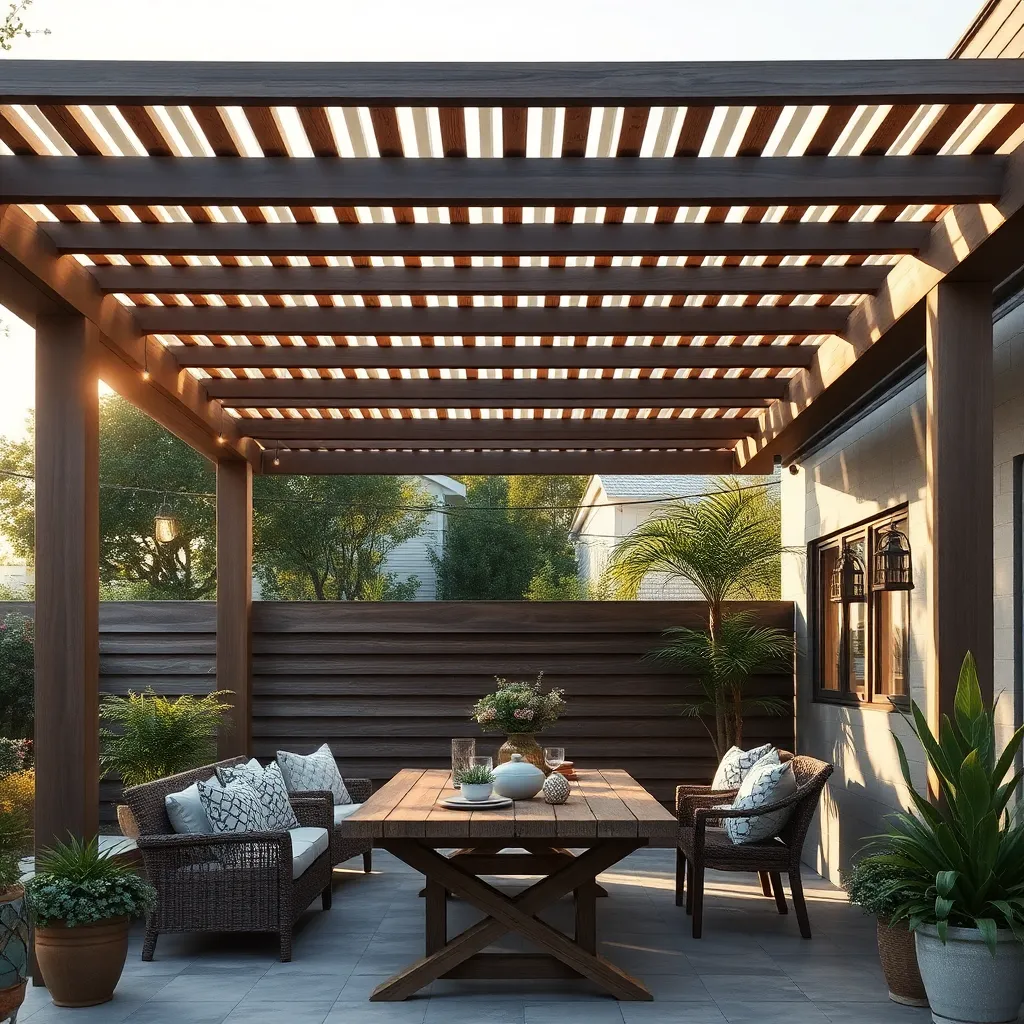
To truly enhance the ambiance of your pergola dining area, incorporating string lights or hanging lanterns adds a warm, inviting glow that extends usability into the evening. Opt for weather-resistant LED bulbs with warm color temperatures (2700K–3000K) and consider solar-powered options for easy installation without wiring. Additionally, layering in textiles like outdoor rugs and cushions made of fade-resistant, quick-dry fabrics helps create comfort and style while defining the dining space.
For a more advanced touch, installing retractable fabric canopies or bamboo shades can provide adjustable shade and privacy, adapting to changing weather and light conditions. Use durable materials like solution-dyed acrylic or polyester for longevity, and ensure your mounting hardware is rust-resistant stainless steel or powder-coated metal to withstand outdoor elements. These accessories not only enhance aesthetics but also improve functionality, making your pergola a year-round outdoor retreat.
Maintenance Tips for Longevity
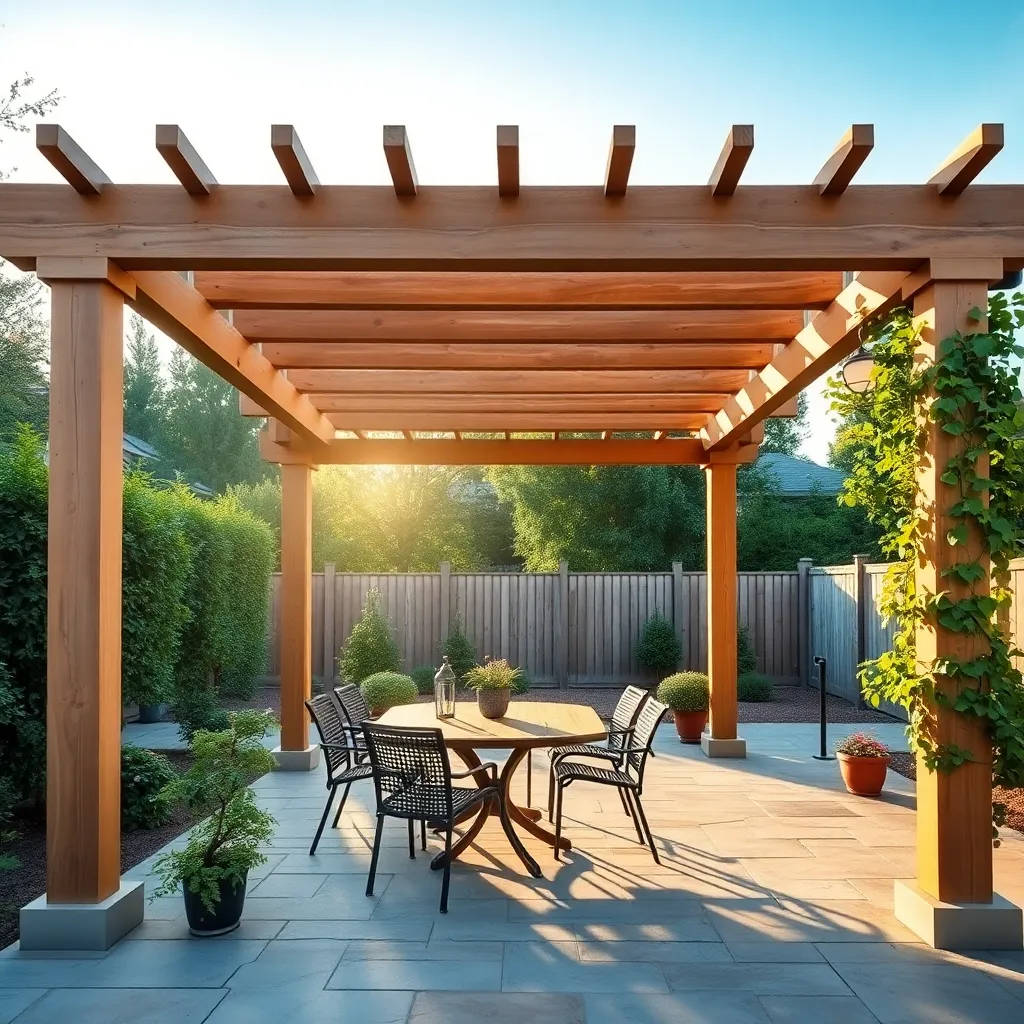
Regular upkeep is essential for ensuring your pergola remains both beautiful and sturdy. Apply a high-quality sealant or weatherproof stain annually to wooden structures to protect against moisture and UV damage. For metal pergolas, inspect joints and fasteners every six months, tightening or replacing any rusted hardware to maintain structural integrity.
To prevent long-term wear, incorporate design features that facilitate maintenance. Consider installing removable or adjustable slats to easily clean debris and allow for seasonal airflow adjustments. Additionally, use durable, weather-resistant materials like cedar or aluminum with powder coating for a low-maintenance, lasting outdoor dining space.
Conclusion: Creating Beautiful Outdoor Spaces
Creating a beautiful outdoor dining space with the right pergola design is more than just enhancing your home—it’s about crafting a warm, inviting environment where relationships can flourish. From classic wooden arches to modern minimalist styles, each of the 12 pergola designs offers unique ways to nurture connection, encourage shared moments, and build lasting memories together. Whether you prefer a cozy, intimate nook or a spacious area for family gatherings, these ideas can inspire you to create a space that reflects your relationship’s personality.
Your next step? Choose one pergola style that resonates most with you and sketch out a simple plan for how it can transform your outdoor dining experience. Even small changes can spark meaningful conversations and deepen bonds.
Don’t forget to save or bookmark this article—it’s a valuable resource to revisit whenever you need inspiration for enhancing your shared spaces. Remember, investing in your environment is investing in your relationship’s future. With intention and creativity, you can build not just a pergola, but a stronger, more connected partnership for years to come.

